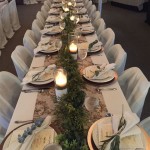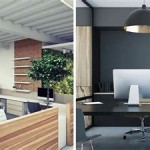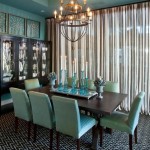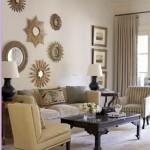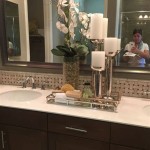How To Decorate A Red Brick Fireplace
A red brick fireplace, a classic architectural feature, can serve as a focal point in any room. Its inherent warmth and texture contribute to a cozy and inviting atmosphere. However, decorating a red brick fireplace requires careful consideration to avoid clashing elements and to maximize its visual appeal. The following guidelines provide a comprehensive approach to enhancing the aesthetics of a red brick fireplace, covering color palettes, mantel décor, and surrounding furniture arrangements.
Understanding the Undertones of Red Brick
Red brick, despite its seemingly straightforward color, contains a complex array of undertones that influence the overall aesthetic. These undertones often lean towards warm shades of orange, brown, and sometimes even a hint of pink. Before selecting any decorative elements, it is crucial to analyze the precise undertones present in the specific brick used in the fireplace. This analysis informs the choice of complementary colors for paint, artwork, and accessories. Ignoring these undertones can lead to a discordant color scheme that diminishes the fireplace's inherent beauty.
Neutral color palettes often work well with red brick due to their ability to balance the brick's boldness. Shades of white, off-white, cream, and beige provide a clean and sophisticated backdrop, allowing the red brick to stand out without overwhelming the space. These neutral colors can be incorporated through wall paint, furniture upholstery, and area rugs. Alternatively, incorporating cooler colors such as grays and blues can create a striking contrast. These colors can be strategically used in accent pieces like throw pillows, curtains, and artwork. However, when using cooler tones, it is essential to ensure they possess a certain level of saturation to prevent them from appearing washed out against the vibrancy of the brick.
Furthermore, darker shades such as deep greens, navy blues, and charcoal grays can create a dramatic and luxurious atmosphere. These colors pair effectively with red brick when aiming for a more formal or sophisticated aesthetic. When employing darker colors, it is crucial to ensure adequate lighting within the room to prevent it from feeling too enclosed or somber. The use of metallic accents, such as gold or brass picture frames or candle holders, can also add warmth and brilliance to the space, counteracting the potential dreariness of darker palettes.
Selecting Mantel Decor and Accessories
The mantel, often the most prominent feature of a fireplace, provides an ideal surface for showcasing decorative items. The selection and arrangement of these items directly impact the fireplace's overall visual appeal. A well-curated mantel should reflect personal style while complementing the existing architectural features and color scheme of the room. Balance, proportion, and visual hierarchy are critical considerations when arranging items on the mantel.
One common approach is to create a focal point using a large, central piece, such as a mirror or a piece of artwork. The size of the focal point should be proportional to the size of the fireplace. A mirror not only adds visual interest but also helps to reflect light, making the room appear larger and brighter. Artwork should be chosen to complement the room's color palette and overall style. Abstract pieces or landscape paintings can be particularly effective. Flanking the central piece with smaller objects, such as vases, candles, or sculptures, creates a sense of balance and symmetry.
Natural elements, such as plants and flowers, can add a touch of freshness and vitality to the mantel. Greenery softens the hard lines of the brick and adds a pop of color. Consider using potted plants, branches, or floral arrangements to incorporate natural elements into the mantel décor. The size and style of the plants should be carefully chosen to suit the overall aesthetic of the room. For instance, a minimalist space might benefit from a single, sculptural succulent, while a more traditional room might accommodate a larger, overflowing floral arrangement.
Personal touches, such as family photos, collectibles, or travel souvenirs, can add character and individuality to the mantel. However, it is important to avoid overcrowding the space with too many items. A curated selection of meaningful objects will create a more impactful and visually appealing display. Consider grouping items with similar colors, shapes, or textures to create a cohesive and harmonious arrangement. The inclusion of varied heights and depths can add visual interest and prevent the display from appearing flat or monotonous.
Arranging Furniture Around the Fireplace
The arrangement of furniture around the fireplace significantly influences the overall flow and functionality of the room. The primary objective should be to create a comfortable and inviting seating area that encourages conversation and relaxation. The placement of furniture should prioritize the fireplace as the focal point, drawing the eye and creating a sense of warmth and intimacy.
A common arrangement involves placing a sofa directly facing the fireplace, with additional seating arranged around it. This configuration creates a symmetrical and balanced layout, emphasizing the fireplace as the central element. Armchairs can be placed on either side of the sofa to create a more intimate seating area. The distance between the sofa and the fireplace should be carefully considered to ensure comfortable viewing and prevent the room from feeling cramped. A coffee table placed in front of the sofa provides a convenient surface for drinks, books, and other items.
An alternative arrangement involves creating a more conversational seating area by angling the sofa and armchairs towards each other. This configuration encourages interaction and creates a more relaxed and informal atmosphere. A round coffee table can be particularly effective in this type of arrangement, as it allows for easy access from all seating positions. The inclusion of side tables near the armchairs provides additional surfaces for lamps, drinks, and other items.
Area rugs can be used to define the seating area and add warmth and texture to the room. The rug should be large enough to accommodate all of the furniture legs, creating a unified and cohesive look. The color and pattern of the rug should complement the room's overall color scheme and style. Consider using a rug with a bold pattern or texture to add visual interest to the space. The placement of lighting fixtures is also crucial for creating a comfortable and inviting atmosphere. Table lamps, floor lamps, and recessed lighting can be used to illuminate the seating area and highlight the fireplace. The use of dimmer switches allows for adjusting the lighting levels to create the desired ambiance.
Ultimately, decorating a red brick fireplace is an exercise in balance and harmony. By understanding the brick's undertones, carefully selecting mantel décor, and thoughtfully arranging surrounding furniture, it is possible to transform this classic architectural feature into a stunning focal point that enhances the overall aesthetic of the room. The key is to approach the process with a clear vision and a commitment to creating a space that is both visually appealing and functionally comfortable.

34 Beautiful Fireplace Ideas For Cozy Warmth All Year Long Brick Decor Red Fireplaces Design

Hearth Room Back Porch Musings Home Fireplace Brick Decor Red Fireplaces

16 Red Brick Fireplace Makeover Ideas

35 Stylish Brick Fireplaces That Inspire Shelterness

Mortar Wash Brick Fireplace Makeover Dimples And Tangles

Red Brick Fireplace Ideas Beautiful Designs Decor Fireplaces

How To Paint A Brick Fireplace

What Goes With A Redbrick Fireplace

What Goes With A Redbrick Fireplace

Living Room Red Brick Fireplace Decor Formal Designs Decorating Fireplaces White
